Importance of Push Notification Campaigns – An Inside Story
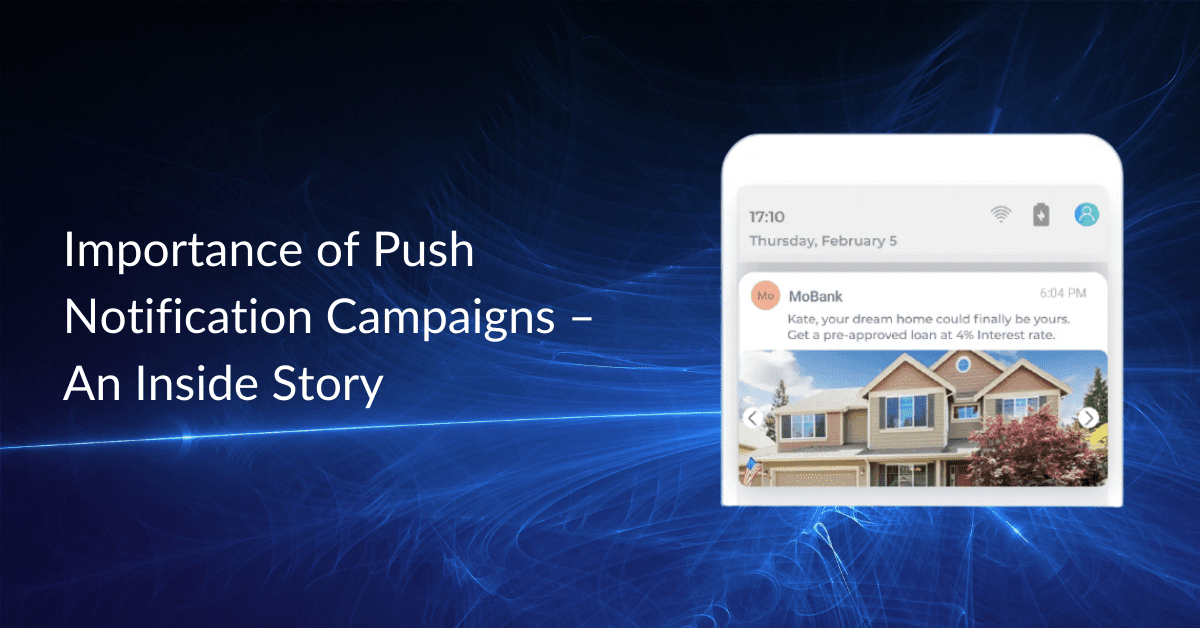
Reading Time: 7 minutes
|
With mobile phones replacing wallets and taking up the better part of your attention and time; push notifications are becoming ever more crucial elements of marketing strategies.
What are push notifications?
Push notifications are messages sent by apps to mobile devices that host the apps. They are incredibly efficient at delivering relevant and time-sensitive messages to the user.
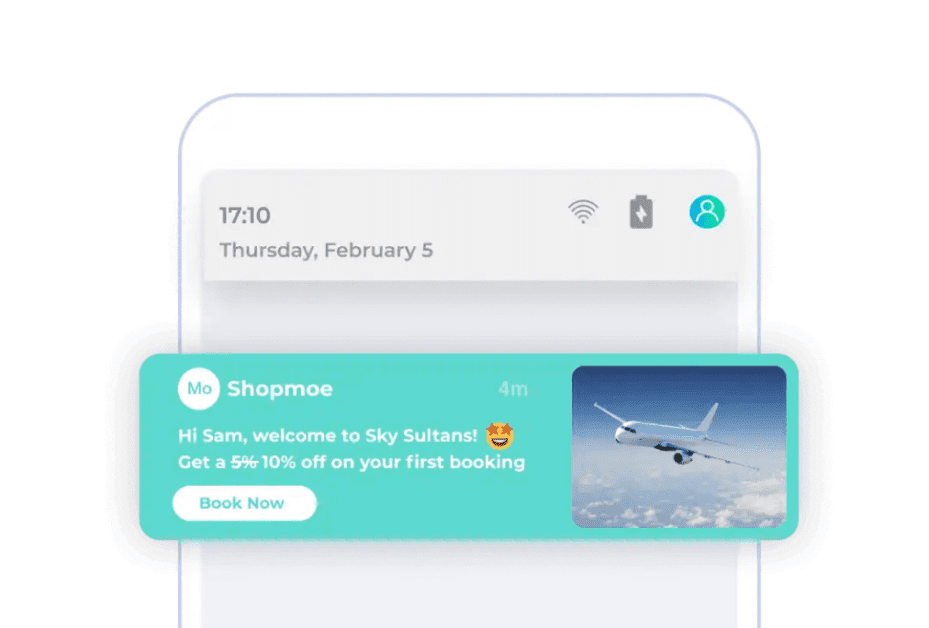
| Bonus Content
How You Can Boost User Engagement By Maximizing Push Notification Delivery Rates[Download Ebook] Push Notification Benchmarks for Media & Entertainment Mobile Apps, 2021 [Download Ebook] |
What makes push notifications tick? It’s the idea of the mobile device becoming a ‘personal’ companion from that of a luxury concept.
In doing so, they’ve solved one of the marketing’s most perplexing questions: How to engage with a user at the ‘right’ time? Hail Push-Notifications!, because they:-
1. They can reach out to the customer with the right information at the right time. E.g., Flight and hotel reservations for upcoming travel in the case of a travel app.
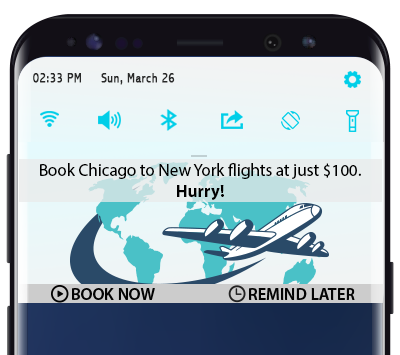
2. It has enabled marketers to personalize, add rich and engaging content based on user behavior, and understand user profiles like never before. E.g., Hey Sarah, we noticed you’ve added a shoe to your cart. Here’s an additional 10% if you purchase this in the next half hour. Use this code- ADD-10
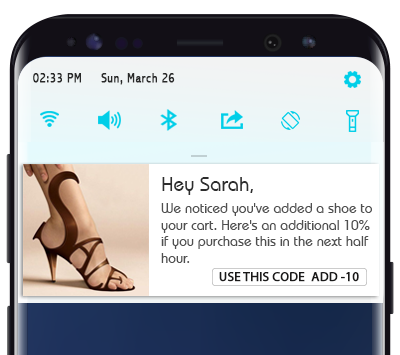
At the heart of push notifications lies the need for increased user engagement, driving app revenue, conversion and retain existing users. An expertly executed strategy will help marketers achieve these.
But all is not as rosy as it seems. The average user has around 26 apps installed on their phone. In reality, however, they use only three apps daily. Research has shown that if an app is unused for seven days, chances of its usage again are slim; plus, 1 in 4 apps get uninstalled after the first use.
In one of our earlier posts, we talk about how push notifications can drive mobile app conversions.
Using a combination of rich content, carousel notifications, and engaging messages, push notifications have enabled companies to achieve tremendous results on the mobile platform.
Here are examples of five push notification actions done right.
Push Notifications – an Elemental Definition
Now, there are a lot of interpretations for push notifications floating around; some refer to them as actionable messages, rich messages, personalized messages and if you’re wondering which of this is the right one – all of them are. And that’s okay because push notification is not a standardized concept like currency or time. There can be, and there are, many kinds of push. How about we break it down to the incorporating elements?
- Sent by an app to the user’s phone.
- A means to alert the user of new events.
- Can contain rich content such and pics, GIF images or even videos (based on the device supportability).
- Personalized content aimed at generating a call-to-action from the user.
- Used to send timely and relevant info to the user in real-time.
Considering the flexibility offered by push notifications, marketers can indulge in push notifications for an assortment of use-case scenarios. All these perks account for push notifications being the rage among marketers.
In this post, we will focus exclusively on mobile push notifications.
Push Notifications – Behind the Scene
To fully comprehend the intricacies of a push-notification, we need to get technical and understand the push notification flow. Now that we have an idea of what a push is, this section should be easy to follow.
Mobile Push Notifications
The process starts when a user installs an app. Depending on whether the OS (operating system) is Android or iOS, the app registers itself with either GCM (Google Cloud Messaging)/ FCM (Firebase Cloud Messaging – the new version of GCM) or APNS (Apple’s Push Notification Service).
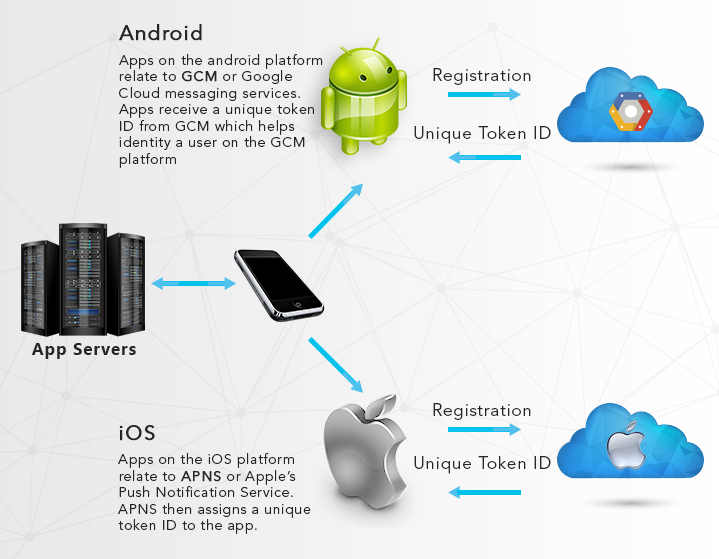
Post-registration, GCM/FCM, or APNS (depending on the OS) will send a unique token ID to the app. This token is what will identify a user to the app on a specific phone. When the token is assigned, the app communicates the same to its server.
The stage is now ready for push notifications to be sent and received. As with all messages, push notifications start their journey at the design table, where they take on rich content, images, and relevant, timely information. The completed message gets sent to the app’s server. Cloud notification servers (GCN / APNS) receive this message from the app’s servers. The token ID collected from the previous process acts as a delivery address here. The notification servers make use of this ID to have the message delivered to the unique app user.
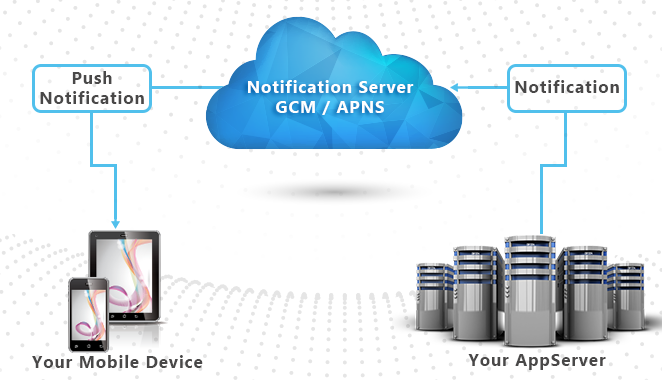
Are Push Notifications Important?
Absolutely. Remember, push notifications are unique, so keep them that way. Push messages are instant, but they also occupy a personal space – the mobile phone. This means, unlike email marketing or SMS marketing, you do not want to bombard the user with a ton of notifications. It’s a sure-shot way to have your product uninstalled.
But if done right, push messaging could multiply your marketing efforts. And by doing it right, I am referring to sending push content that is relevant, timely, and unique to the user. Anything otherwise becomes a pain for the user because a collection of irrelevant push notifications in the phone’s notification bar is a straight-out ask, to have the app removed.
Which brings us to the question – How is it done right?
- Learn detailed strategies on how these push notifications work, easy-to-implement tips, and real-world examples of brands getting push notifications right.
An excellent way to find out how to do it right is to first decide on three major components to push messaging – Frequency, Content, and Engagement.
1. Frequency
Push messaging is a great tool. But here are some factors working against you.
- The user has many apps installed on their phone that give push notifications
- Phone usage and purpose of usage vary throughout the day
- Do you reach the user at a time and with the message that engages the user?
As a marketer, your presence must be welcomed by the user. In other words, what you bring should be precisely what the user wants. Consider your push notifications as a yacht. If you’re at the pier when it’s crowded with boats, the push notifications can get lost in the crowd. You want to ensure that you’re THE boat in the harbor, right when the user needs you. One way to guarantee your push does not get lost in the noise is to keep the messaging relevant to the user.
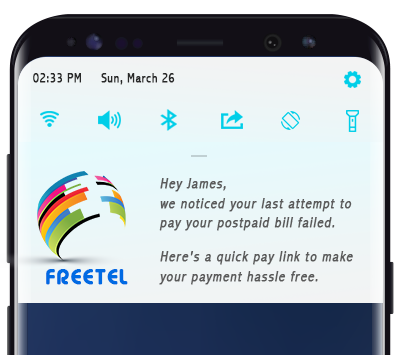
Now, while there is no correct frequency guideline for push notifications, there is the wrong frequency, and that is ‘one push too many.’ All it takes is one unnecessary push notification sent at the wrong time to change your gentle, friendly gesture into harassment.
A good way to decide on the frequency is to trigger these notifications on the back of individual user actions. This way, you ensure that notifications are sent only when the user needs them.
2. Content
Over time push notifications have evolved from bare text messages into visually rich, compelling, and engaging affairs. Nowadays they can incorporate, images, GIFs, audio/ visual content as well as the call to action and options for direct engagement.
With so much of personalization options around, marketing now has a personal aura to it like never before. In fact, it is vital that marketers personalize push messages for the user. Mobile phones today are a very private matter, so why should mobile push notifications be any different?
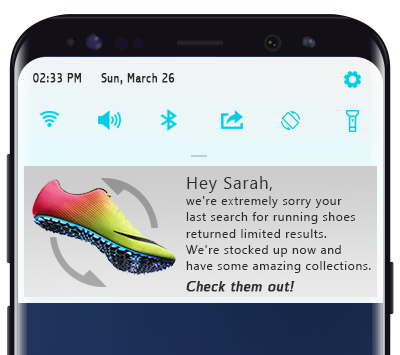
The ideal content is one that provides a clear call to action, to the user, while driving revenue for the company. If the push notification can convince the user to invest their time and effort in the proposal (push message), they will engage with the message and make the purchase.
Of course, not all push notifications are revenue-driven; the crux here is engagement. The messaging of push should be compelling to prompt action/ engagement from the user.
3. Engagement
Digital transformation has changed the manner in which individuals, businesses, and entire economies operate. This transformation has also created a scenario where every entity is connected; this fundamental shift has made engagement with each other an inevitable consequence.
The success of a marketer lies in being able to leverage the engagement economy. Push notifications that make a user dismiss them is a bad example of being engaging. However, those that motivate the user to click or proceed with the intent of the push message have won significant ground in the battle for customer engagement.
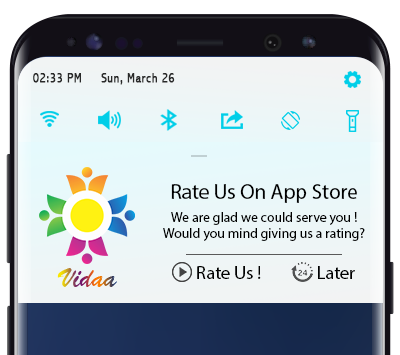
We are down to the basics of socialization – interaction. If you can get your user to interact/ engage with your message, you’ve solved one of the biggest hurdles – getting users to engage with your brand.
All said and done, the possibilities for your brand through push notification engagements are limitless. Push notifications are unique for a reason, and it’s vital to keep them that way. If you start treating push notifications akin to cold email messaging, there’s a high chance you are not employing the full power of push.
If you liked this article, be sure to subscribe to our blog for engaging and relevant posts. We won’t spam you with emails; that’s a promise!
Want to know how brands like Bigbasket, Travelz, and Oyo Rooms use MoEngage Push Amplification to improve their push notification delivery rates? Learn more about push amplification here.













